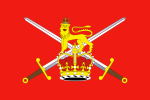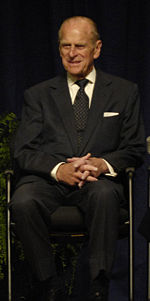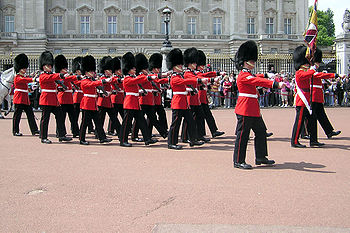- Portal:British Army
-
 American Civil War · American Revolutionary War · Battleships ·
American Civil War · American Revolutionary War · Battleships ·  Biological warfare · British Army · Canadian Forces · Cold War · Crusades ·
Biological warfare · British Army · Canadian Forces · Cold War · Crusades ·  Italian Wars · Military history of Africa · Military history of France · Military history of the Ottoman Empire · Military of ancient Rome ·
Italian Wars · Military history of Africa · Military history of France · Military history of the Ottoman Empire · Military of ancient Rome ·  Military of Australia · Military of Germany ·
Military of Australia · Military of Germany ·  Military of Greece · Military of Pakistan ·
Military of Greece · Military of Pakistan ·  Military of the United States ·
Military of the United States ·  Napoleonic Wars · NATO · Royal Air Force · Royal Navy · Submarine · Tank ·
Napoleonic Wars · NATO · Royal Air Force · Royal Navy · Submarine · Tank ·  Terrorism ·
Terrorism ·  United States Air Force · United States Army · United States Coast Guard · United States Marine Corps ·
United States Air Force · United States Army · United States Coast Guard · United States Marine Corps ·  United States Navy ·
United States Navy ·  War · War of 1812 · Weapons of mass destruction ·
War · War of 1812 · Weapons of mass destruction ·  World War I ·
World War I ·  World War II
World War IIThe British Army
The British Army is the land armed forces branch of the British Armed Forces. It came into being with unification of the governments and armed forces of England and Scotland into the Kingdom of Great Britain in the Acts of Union 1707. The new British Army incorporated regiments that had already existed in England and Scotland and was controlled by the War Office from London. As of 2006, the British Army includes roughly 107,730 active members and 38,460 Territorial Army members. The professional British Army has also been referred to as the Regular Army since the creation of the Territorial Army. The British Army is deployed in many of the world's war zones as part of a fighting force and in United Nations peacekeeping forces.
In contrast to the Royal Navy, Royal Marines and Royal Air Force, the British Army does not include "Royal" in its title, because of its roots as a collection of disparate units, many of which do bear the "Royal" prefix, such as the Royal Artillery and the Royal Engineers.
Selected article
The Territorial Army (TA) is the principal reserve force of the British Army, the land armed forces branch of the United Kingdom, and composed mostly of part-time soldiers paid at the same rate, while engaged on military activities, as their Regular equivalents. It forms about a quarter of the overall strength of the Army. Its original purpose was home defence although the establishment of the Territorial and Army Volunteer Reserve in 1967 involved a restructuring and revised doctrine leading to provision of routine support for the Regular army overseas. The Indian Territorial Army is based on its British counterpart.Territorial soldiers, or Territorials, are volunteers who undergo military training in their spare time either as part of a formed local unit or as specialists in a professional field. TA members have a minimum commitment to serve 27 training days per annum, with specialists only required to serve 19 days, which normally includes a two-week annual camp. As a volunteer military reserve raised from local civilians, the TA may be considered a militia and several units bear the title "militia", although historically, the British official term Militia designated a specific force, distinct from the Volunteers and the Yeomanry. Territorials normally have a full-time job or career, which in some cases provides skills and expertise that are directly transferable to a specialist military role, such as NHS employees serving in TA Royal Army Medical Corps units. All Territorial personnel have their civilian jobs protected by employment law should they be compulsorily mobilised. There are currently approximately 34,000 serving members in the TA, although it has a target established strength of 42,000.
Selected biography
The Prince Philip, Duke of Edinburgh (born Prince Philippos of Greece and Denmark, 10 June 1921) is the husband and consort of Queen Elizabeth II.Originally a royal Prince of Greece and Denmark, Prince Philip renounced these titles shortly before his marriage, though he retains the Greek flag (white cross on blue field) on his Shield of Arms. At the time of his engagement he was known as Lieutenant Philip Mountbatten. On 20 November 1947, he married Princess Elizabeth, the heiress presumptive to King George VI. Prince Philip is a member of the Danish-German House of Schleswig-Holstein-Sonderburg-Glücksburg, which includes the royal houses of Denmark and Norway and the deposed royal house of Greece.
The day before his marriage, King George VI granted him the style of His Royal Highness and, on the morning of the marriage, created him Duke of Edinburgh, Earl of Merioneth and Baron Greenwich. In 1957, Philip was created a Prince of the United Kingdom by Queen Elizabeth II.
In 1952, the Duke was given the rank and titles Admiral of the Fleet, Field Marshal, and Marshal of the Royal Air Force. He was also made the Captain-General of the Royal Marines. As was the established tradition with all previous monarchs, the Queen as Commander-in-Chief of the Defence Forces outranks, by virtue of being Sovereign, all military personnel.
WikiProjects
Military history WikiProject • British military history task force • United Kingdom WikiProject • History WikiProject • Biography WikiProject
Selected unit
The Grenadier Guards is the most senior regiment of the Guards Division of the British Army, and, as such, is the most senior regiment of infantry. It is not, however, the most senior regiment of the Army, this position being attributed to the Life Guards. The Coldstream Guards were organized before the Grenadier Guards, but their regiment is reckoned after the Grenadiers in seniority.The grouping of buttons on the tunic is a common way to distinguish between the regiments of Foot Guards. Grenadier Guards' buttons are equally spaced and embossed with the Royal Cypher. Modern Grenadier Guardsmen wear a cap badge of a "grenade fired proper".
Selected equipment
The SA80 (Small Arms for the 1980s) is a family of 5.56 mm small arms designed and produced (until 1988) by the Royal Small Arms Factory at Enfield Lock. In 1988 production of the rifle was transferred to the Royal Ordnance’s Nottingham Small Arms Facility (later British Aerospace, Royal Ordnance; now BAE Systems Land Systems Munitions & Ordnance).
In 2000, Heckler & Koch, at that time owned by Royal Ordnance, were contracted to upgrade the SA80 family of weapons. Two hundred thousand SA80s were re-manufactured at a cost of £400 each, producing the L85A2 variant. Changes focused primarily on improving reliability and include: a redesigned cocking handle, modified bolt, extractor and a redesigned hammer assembly that produces a slight delay in the hammer’s operation in continuous fire mode, improving reliability and stability. The L85A2 can also mount the HK AG36 40 mm grenade launcher in a configuration similar to the M203 grenade launcher. The addition of the grenade launcher adds another 3.30 lb (1.49 kg) to the L85A2's weight.
From 2007 an upgrade including the provision of ACOG Sights, a new handguard incorporating Picatinny Rails (with optional hand grip/bi-pod). Rifle and a new vortex style flash hider is being introduced for use by selected units }}
Related portals
Selected picture
Guards march out of Buckingham Palace (London, England) at the end of the Changing of the Guard ceremony. Featured Content
Things you can do
- Attention needed
- ...to referencing and citation • ...to coverage and accuracy • ...to structure • ...to grammar • ...to supporting materials
- Popular pages
- Full list
- Cleanup needed
- Add an article here!
- Requested articles
- A Force • Anglo-Norwegian Joint Committee • Army Regulation Bill • Geoffrey Barkas • Thomas Baskerville • Thomas Best • Francis Blanchain • Richard Bonython • Bernard Brocas (Royalist) • Nicholas Byron • Cannon Kopje • Combined Operations Directorate • Dublin Brigade • Malcolm Dunbar • Humphrey Gale • General Service Enlistment Act • Infantry Junior Leaders Battalion • Bussy Mansell • Matabele Campaign • James Pye Molloy • Charles Morgan (army officer) • John Norris (army officer) • Operation Rayon • William Vavasour • Donat Henchy O'Brien • Operation Shark • Radfan uprising • Royal Sicilian Volunteers • Three-Two Battalion • Narendra Bir Singh • Thirty Committee • Claude William Jacob • Paul Mainwaring Jones • Battle of Penobscot • Campobello Island Raid • Siege of Cartagena • Counter-Revolutionary Warfare Wing • County Galway Volunteers • Gurkha Security Guards Limited • Keeni-Meeni Services • Lifeguard (mercenary company) • Battle of Pigeon Hill • Battle of Trout River • Saladin Security • Trident Maritime • Wellington Foot Guards
- Expansion needed
- Battle of Germantown • Roulement • Addiscombe Military Academy • Home Defence Executive • Operation Accumulator • William Rowan • Richard James Dacres • Frederick Haines • Cádiz Expedition (1625) • Battle of Skerki Bank • Cádiz Expedition • Richard Clement Moody • Arthur Reid Lempriere • Henry Spencer Palmer • Royal Engineers, Columbia detachment • 8x57mm IS (nomenclature as "7.92mm" by Poland and GB?)
- Images needed
- Aberedw Castle • Siege of Calcutta
- Merging needed
- Add an article here!
- Citations needed
- Add an article here!
- Translation needed
- Add an article here!
visit task force · edit this list
To transclude this list, use {{WPMILHIST Announcements/British military history}}Category tree
Associated Wikimedia
- Wikipedia portals:
- Culture
- Geography
- Health
- History
- Mathematics
- Natural sciences
- People
- Philosophy
- Religion
- Society
- Technology
Wikimedia Foundation. 2010.





